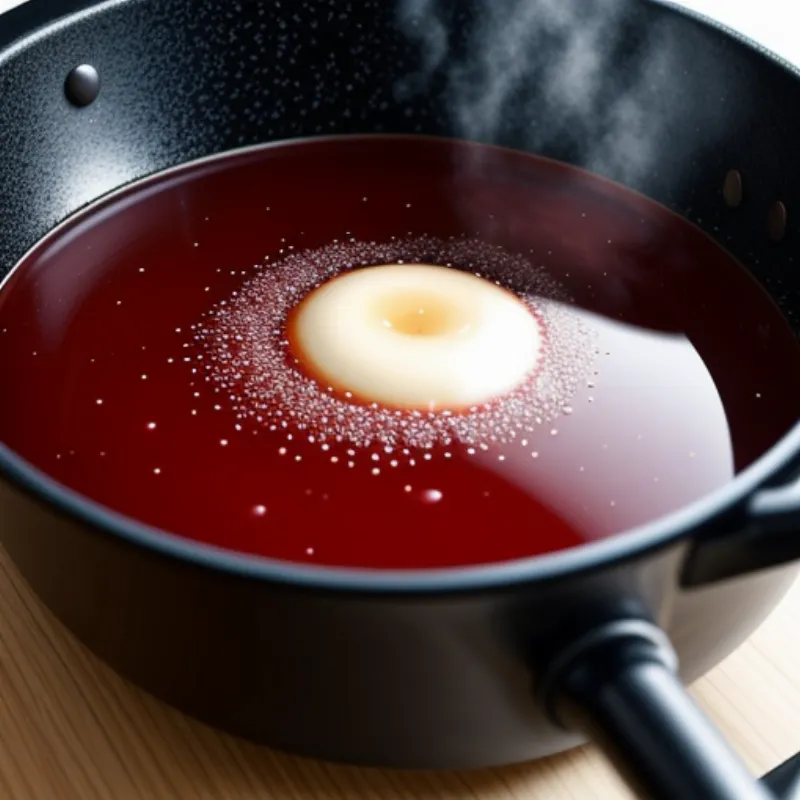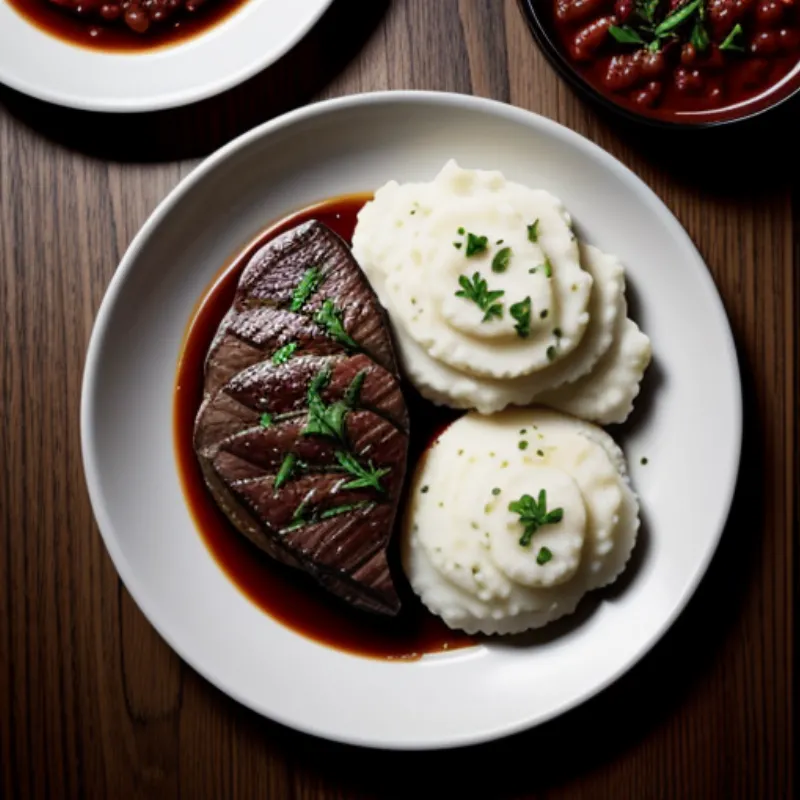Sauce Espagnole, one of the five mother sauces of classical French cuisine, might sound intimidating at first. Images of stuffy chefs in Parisian kitchens might come to mind. But let me assure you, dear reader, this luxurious sauce is achievable for home cooks of all levels. Imagine a velvety smooth, deeply savory sauce, adding a touch of elegance to your everyday meals. This, my friends, is the magic of Sauce Espagnole.
Delving into the Depths of Flavor: What is Sauce Espagnole?
This “brown sauce” is traditionally made by thickening a rich brown stock with a roux (a mixture of butter and flour) and adding aromatic vegetables, tomato puree, and herbs. The result? A symphony of flavors that elevates simple dishes into culinary masterpieces.
Ready to Embark on this Delicious Journey? Let’s Gather our Ingredients:
For the Brown Stock:
- 2 pounds of beef bones, roasted
- 1 onion, roughly chopped
- 2 carrots, roughly chopped
- 3 celery stalks, roughly chopped
- 2 cloves of garlic, peeled and smashed
- 2 bay leaves
- 6 sprigs of fresh thyme
- 1 teaspoon black peppercorns
- 1 tablespoon tomato paste
- 4 quarts of cold water
Chef’s Tip: “Roasting the beef bones is crucial for a deep, rich flavor. Don’t skip this step!” advises Chef Pierre Dubois from the renowned Le Cordon Bleu culinary school.
For the Sauce Espagnole:
- 1/2 cup (1 stick) unsalted butter
- 1/2 cup all-purpose flour
- 1 cup chopped yellow onion
- 1/2 cup chopped carrot
- 1/2 cup chopped celery
- 1/4 cup tomato puree
- 2 cloves garlic, minced
- 1/4 cup dry red wine (optional)
- 6 cups of your homemade brown stock (or store-bought, low sodium beef broth)
- 2 sprigs of fresh thyme
- 1 bay leaf
- Salt and freshly ground black pepper to taste
Don’t fret if you don’t have a certain ingredient! Substitutions are possible. No fresh thyme? Dried thyme will work in a pinch.
Tools of the Trade:
- Large stockpot
- Roasting pan
- Fine-mesh sieve
- Wooden spoon
- Whisk
- Sauce pan
Let the Culinary Symphony Begin: Crafting Your Sauce Espagnole
Making the Brown Stock:
- Preheat your oven to 400°F (200°C). In a roasting pan, toss the beef bones with a drizzle of oil and roast for about an hour, until deeply browned.
- Transfer the roasted bones, onions, carrots, celery, garlic, bay leaves, thyme, and peppercorns to a large stockpot.
- Add the cold water, ensuring the bones are fully submerged. Bring to a boil, then immediately reduce the heat to a low simmer.
- Skim off any foam that rises to the surface. Allow the stock to simmer uncovered for 4-6 hours, or even longer for maximum flavor.
- Strain the stock through a fine-mesh sieve lined with cheesecloth, discarding the solids. Your rich brown stock is now ready!
Creating the Espagnole Sauce:
- In a large saucepan, melt the butter over medium heat.
- Gradually whisk in the flour until a smooth paste, called a roux, forms. Cook the roux for about 5 minutes, stirring constantly, until it turns a light brown color.
- Add the chopped onion, carrot, and celery to the roux. Cook for about 8-10 minutes, stirring frequently, until the vegetables have softened.
- Stir in the tomato puree and minced garlic, cooking for another minute until fragrant.
- Deglaze the pan with red wine (if using), scraping up any browned bits from the bottom.
- Gradually whisk in the hot brown stock, ensuring there are no lumps.
- Add the thyme sprigs and bay leaf. Bring the sauce to a simmer and cook for 45 minutes to an hour, or until the sauce has thickened to your liking.
- Remove the thyme sprigs and bay leaf. Season generously with salt and pepper to taste.
Chef’s Secret: “Patience is key! Allow the sauce to simmer gently. This develops the depth of flavor that distinguishes Espagnole.” shares Chef Elena Rossi, a renowned Italian chef known for her traditional sauces.
 Sauce Espagnole Simmering
Sauce Espagnole Simmering
Culinary Tips and Tricks:
- Adjust the thickness: For a thinner sauce, add more stock. To thicken, simmer for a longer time.
- Straining for Silky Smoothness: For an ultra-smooth sauce, strain it through a fine-mesh sieve after cooking.
- Flavor Variations: Get creative! Add a splash of sherry, a pinch of cayenne pepper, or a tablespoon of chopped fresh herbs for a personal touch.
Presentation and Serving:
- Classic Elegance: Serve your Sauce Espagnole drizzled over roasted meats like beef, duck, or lamb.
- Pasta Perfection: Toss with your favorite pasta, adding a sprinkle of Parmesan cheese.
- Vegetable Delight: Elevate roasted vegetables, mashed potatoes, or polenta with a generous spoonful of Espagnole.
Serving Suggestion: My family adores this sauce with a side of creamy mashed potatoes and perfectly seared steak.
 Sauce Espagnole Plated
Sauce Espagnole Plated
Storing Your Culinary Masterpiece:
- Refrigerate the sauce in an airtight container for up to 5 days.
- Freeze for longer storage (up to 3 months). Thaw overnight in the refrigerator before reheating.
Conclusion: A Flavorful Adventure Awaits!
Congratulations! You’ve embarked on a culinary journey and created a sauce that was once the domain of professional chefs. With its rich history and even richer flavor, Sauce Espagnole is sure to impress your family and friends. Now that you know how to make this classic sauce, don’t be afraid to experiment and make it your own. Share your culinary creations and tell us about your Sauce Espagnole adventure in the comments below. Happy cooking!
Want to explore more delicious sauce recipes? Check out our guide on How to Make Espagnole Sauce for even more tips and variations.
